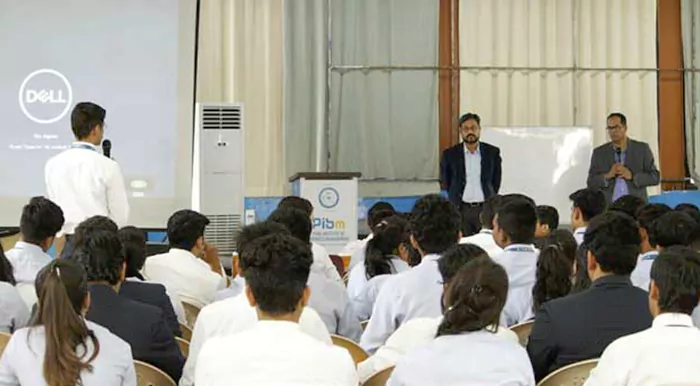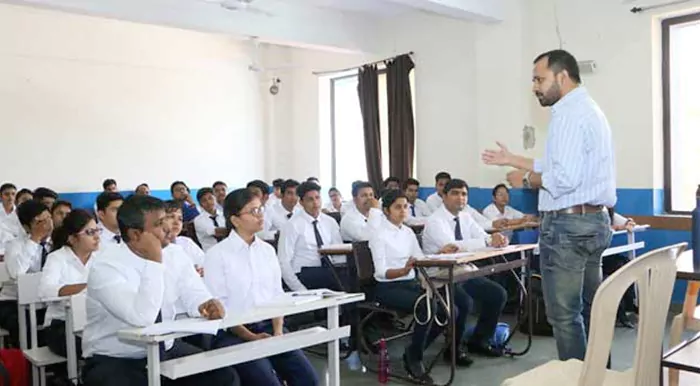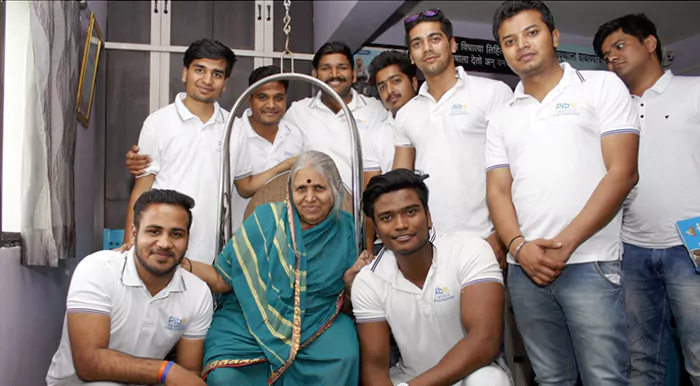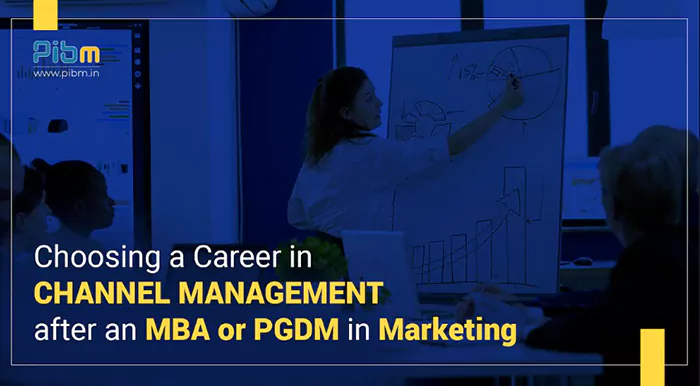PIBM Blog
Education Does Not Only
Happen in the Classroom
PIBM Blog
Harvard Business School & CESIM Simulation Games: PIBM's Advanced MBA & PGDM
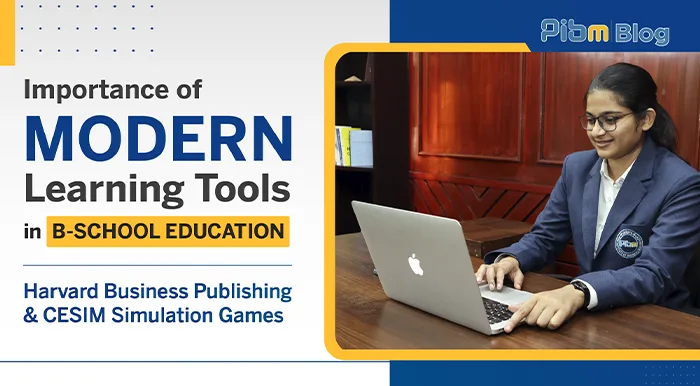
Education
In the past, students joined MBA or PGDM programs to secure high-paying jobs when their program concluded. But, the picture has completely changed – today’s MBA curriculum prioritizes and combines theoretical knowledge and practical learning .
Management students gain theoretical knowledge from books and classroom sessions, but how do they gain practical learning? Stay tuned with us, and we will concentrate on the significance of modern learning tools, especially simulation games in imparting practical hands-on learning in the PGDM & MBA education, focusing on how these tools shape the future of business education at PIBM Pune, one of the top B-Schools in India.
Importance of Simulation Games in MBA Education
Simulation games are interactive tools copying real-life business environments, allowing students to apply their practical learning risk-free. These games simulate how business leaders and managers make decisions, plan strategies, and solve problems in the business world, which they have learned in their PGDM & MBA curriculum. Management Students can better understand how businesses operate and make good decisions by participating in these simulation tools.
Simulation tools or games have the potential to bridge the gap between classroom theories and practical applications. For example, imagine a simulation environment where students act as business managers of a virtual company. They will be provided with market conditions, financial data, and business objectives; on these three bases, they must decide about product pricing, marketing strategies, operations strategy, production levels, and more. In such business project activities, they apply the theoretical concepts they have learned in their courses to a realistic business setting.
Harvard Business Publishing & CESIM Simulations: Two Renowned Simulation Tools
Harvard Business Publishing is renowned for its high-quality educational materials and resources for business education. The organization offers various simulation games to immerse students in realistic business situations. These simulations cover business disciplines, including finance, marketing, operations, and strategic management. Its simulations are known for their accuracy in replicating real-world scenarios, providing students with a challenging yet rewarding learning experience.
Another organization, CESIM, also operates in the business management education industry. Their web-based application focuses on teaching b-school students about different sectors and how to make informed decisions in business. These simulations engage students in critical thinking and strategic decision-making, encouraging them to apply their knowledge in an ever-changing business environment.
Both the companies’ simulation applications have realism and adaptability, allowing instructors to customize the experience based on their curriculum and learning objectives.
Advantages of Using Simulation Games in MBA Curriculum
Integrating modern learning tools such as simulation games into MBA programs offers many advantages contributing to a well-rounded and practical educational experience.
- Application of Theoretical Knowledge:
- Experiential Learning Environment
- Safe Learning Environment
- Promotion of Teamwork and Collaboration
- Real-Time Feedback and Learning
Firstly, these games help students to apply theoretical understandings learned in the classroom to real-world scenarios. Students can witness firsthand how their academic knowledge applies to practical decision-making by engaging in simulations that copy business situations. For example, a finance simulation can help students understand how different financial strategies impact a company's profits, reinforcing their understanding of financial principles.
Secondly, these simulation games act as MBA training methods and provide an immersive and experiential learning environment. These games require active participation and decision-making from the students, which makes them more engaging and memorable. For instance, in a supply chain management simulation, students may have to manage inventory, logistics, and production schedules, gaining a deeper understanding of the complexities of supply chain operations through hands-on experience.
Thirdly, it offers a safe working environment for students to learn from trial and error. In a risk-free environment, students can experiment with different strategies and observe the results without fearing negative real-world consequences. This aspect of simulations encourages students to think out of the box, analyze various scenarios, and develop a deeper understanding of the cause-and-effect relationships in business.
Fourthly, simulation games promote teamwork and collaboration among students. Many simulations are designed for group play, requiring students to collaborate to make decisions and achieve common goals. This collaborative aspect replicates real-world business environments where teamwork is essential for success. For example, in a team-based marketing simulation, students may need to collaborate to develop a cohesive marketing strategy considering factors such as target audience, budget constraints, and competitive landscape.
Furthermore, simulation games provide instant feedback, allowing students to learn from their decisions in real-time. For instance, if a student's marketing campaign in a simulation yields poor results, they can analyze the feedback to understand where they went wrong and refine their strategy for future simulations.
Related Reads for PIBM Blog:
| 10 Tips: Master Time Management Like a Pro | 10 Essential Things a Business School should teach every Student | Importance of Integrating Industry 5.0 Revolution into the MBA & PGDM Curriculum |
Enhancing PGDM & MBA Curriculum through Simulation Games: A Strategic Approach
Pune Institute of Business Management (PIBM) is renowned for its industry-co-designed curriculum and practical learning approach toward business management education. The curriculum at PIBM has integrated simulation games into its PGDM & MBA syllabus , a strategic approach that requires careful planning and alignment with the program's overall learning objectives.
- Alignment with Learning Objectives:
- Faculty Guidance:
- Assessment and Evaluation:
- Integration with other Course Components:
- Reflection and Debriefing:
- Integration of Artificial Intelligence (AI):
- Virtual Reality (VR) and Augmented Reality (AR):
- Customization and Personalization:
- Data Analytics Integration:
The first step in integrating simulation games is to ensure they align with the course or program's learning objectives. This alignment ensures that the simulations provide relevant learning experiences that complement broader educational goals. For instance, PIBM offers simulation training focusing on developing strategic thinking skills.
Faculty Members as Instructors play a pivotal role in successfully integrating simulation games. The faculty members cover the simulations' technical aspects, debrief students, and facilitate discussions based on the outcomes. PIBM has experience-rich faculty members and teachers who use the simulation outcomes to discuss real-world business challenges and strategies.
Developing clear criteria for assessing student performance in simulation games allows PIBM faculty members to evaluate how well students have applied their knowledge and skills in the simulated scenarios. Additionally, providing constructive feedback to students based on their performance helps them understand their strengths and areas for improvement.
Integrating simulation games with other course components, such as lectures, case studies, and group projects, creates a cohesive learning experience. PIBM offers simulation training that could be integrated with lectures on strategic management in the domains of finance, marketing, HR, operations, and more, complementing theoretical concepts with practical applications.
PIBM has forged strong partnerships with leading organizations, such as Deloitte, PwC, EY, TCS, Cadbury, etc, providing students with opportunities for internships, industry projects, and placement assistance. These partnerships enhance the practical relevance of the training and increase graduates' employability.
PIBM provides MBA & PGDM students with valuable hands-on learning experiences that prepare them for real-world career challenges by strategically integrating simulation games into the PGDM & MBA curriculum.
Current Developments in Simulation Games for PGDM & MBA Education at PIBM
The future of simulation games for the MBA curriculum at Pune Institute of Business Management (PIBM) is poised for exciting developments as technology advances.
Here are some of the current developments in modern learning tools, especially simulation games under PGDM & MBA education:
AI-powered simulation games have the potential to revolutionize the way MBA students learn. These games can offer more realistic and dynamic scenarios by simulating the behavior of intelligent agents and market dynamics. This integration could give students a deeper understanding of how AI impacts business decision-making and strategic planning.
Integrating VR and AR technologies into simulation games can transform the learning environment at PIBM. These immersive technologies will allow students to interact with virtual business environments in more realistic ways, providing a hands-on experience that closely mirrors real-world scenarios. For example, students could use VR headsets to explore virtual boardrooms or AR overlays to analyze virtual market data.
PIBM is currently working with companies to offer more customization options, allowing faculty members to tailor the experience to their PGDM & MBA programs' specific needs and learning objectives. This customization includes creating scenarios or adjusting parameters to align with the curriculum. For instance, instructors could customize a finance simulation to focus on specific financial concepts relevant to their course.
The business analytics department at PIBM is currently on course for integrating data analytics tools as another exciting prospect for the future of simulation games. By incorporating data analytics capabilities, these simulation tools can provide more in-depth insights into business performance. This integration will help management students at PIBM to develop data-driven decision-making skills, a vital competency in today's data-driven business environment.
Related Reads for PIBM Blog:
Final Words
PIBM Pune, one of the top PGDM & MBA colleges in India, offers advanced MBA training pedagogies for students through which they can learn real-life business alongside their studies. With a focus on innovative and industry-focussed teaching methods, PIBM ensures students are apprised of the business challenges through immersive learning.
FAQs
What are simulation games in MBA education?
Simulation games are interactive tools replicating real-life business environments, allowing students to apply theoretical concepts in risk-free environments.
How do simulation games benefit MBA students at PIBM Pune?
Simulation games offer hands-on experience in decision-making, strategic planning, and problem-solving, preparing students for real-world business challenges.
What role do simulation games play in the MBA curriculum at PIBM?
Simulation games complement traditional classroom learning by providing practical insights into complex business dynamics and enhancing analytical skills.
Are simulation games easy to integrate into MBA programs?
Integration requires planning and alignment with learning objectives but can enhance the overall educational experience for students.
What are the future trends in simulation games for MBA education at PIBM Pune?
Future trends include AI integration for more dynamic scenarios, VR/AR for enhanced immersion, and customization options for tailored learning experiences.
